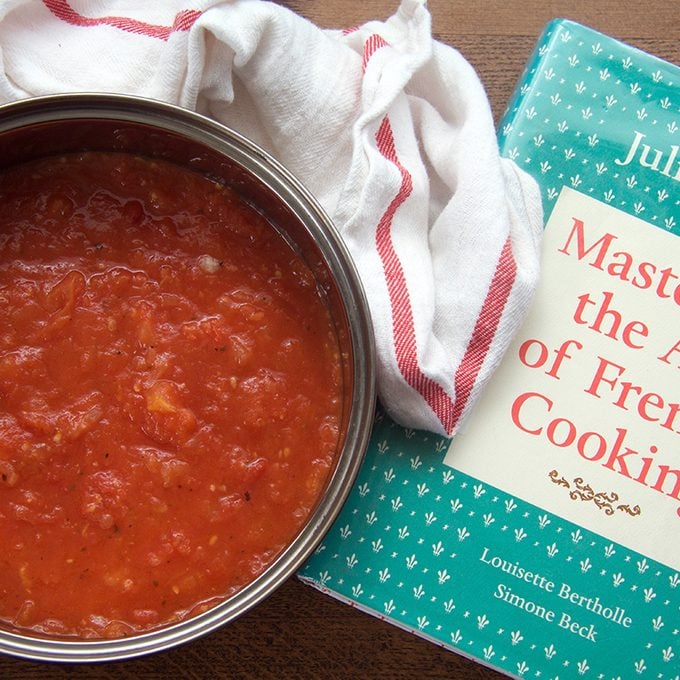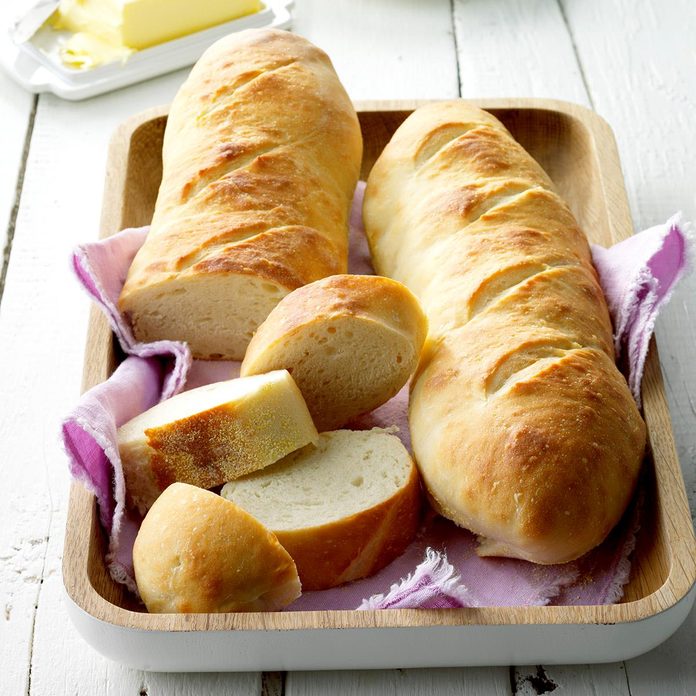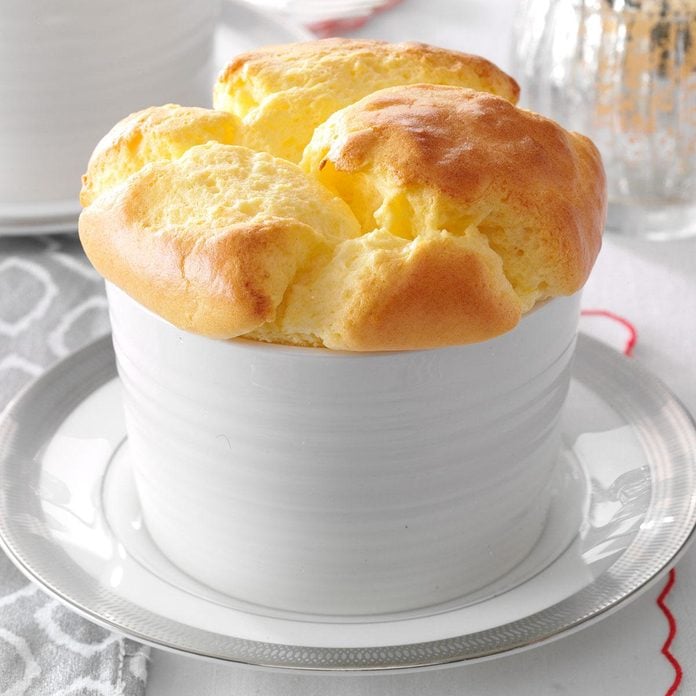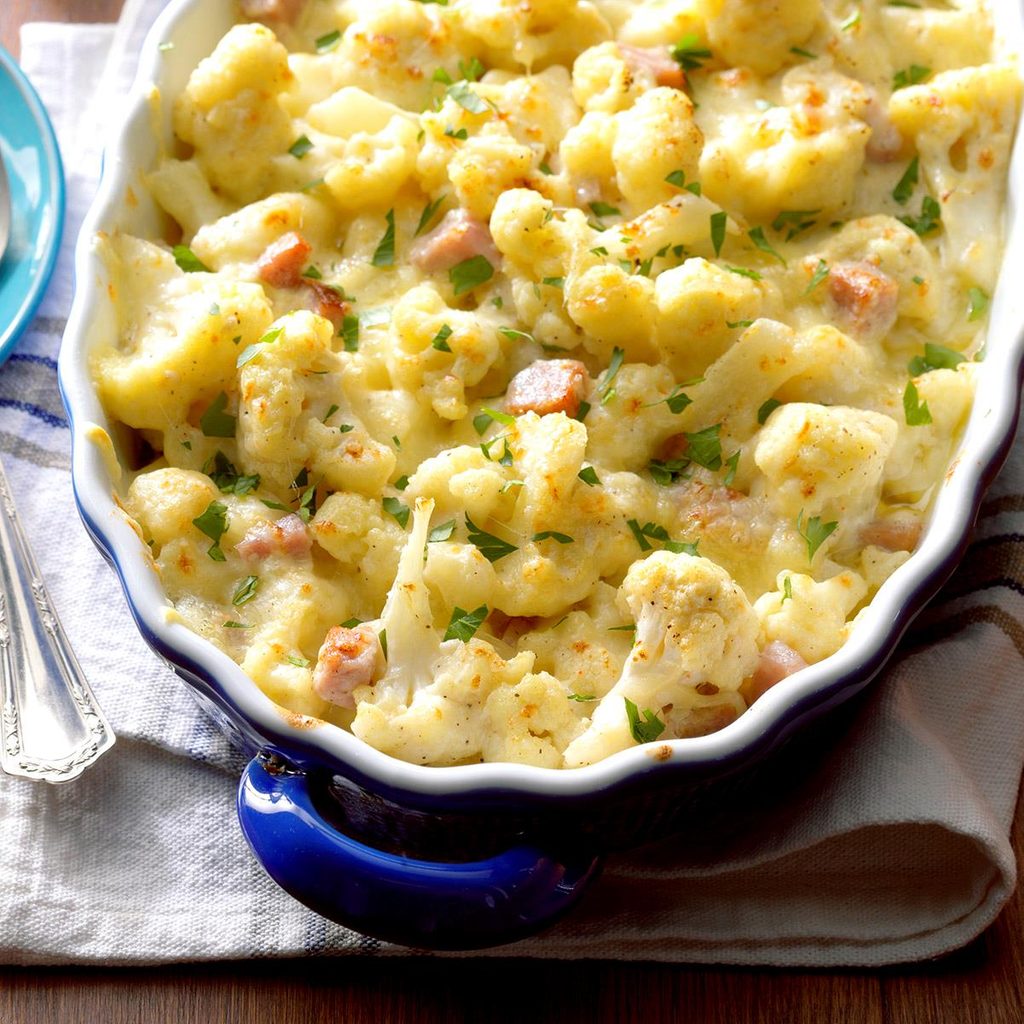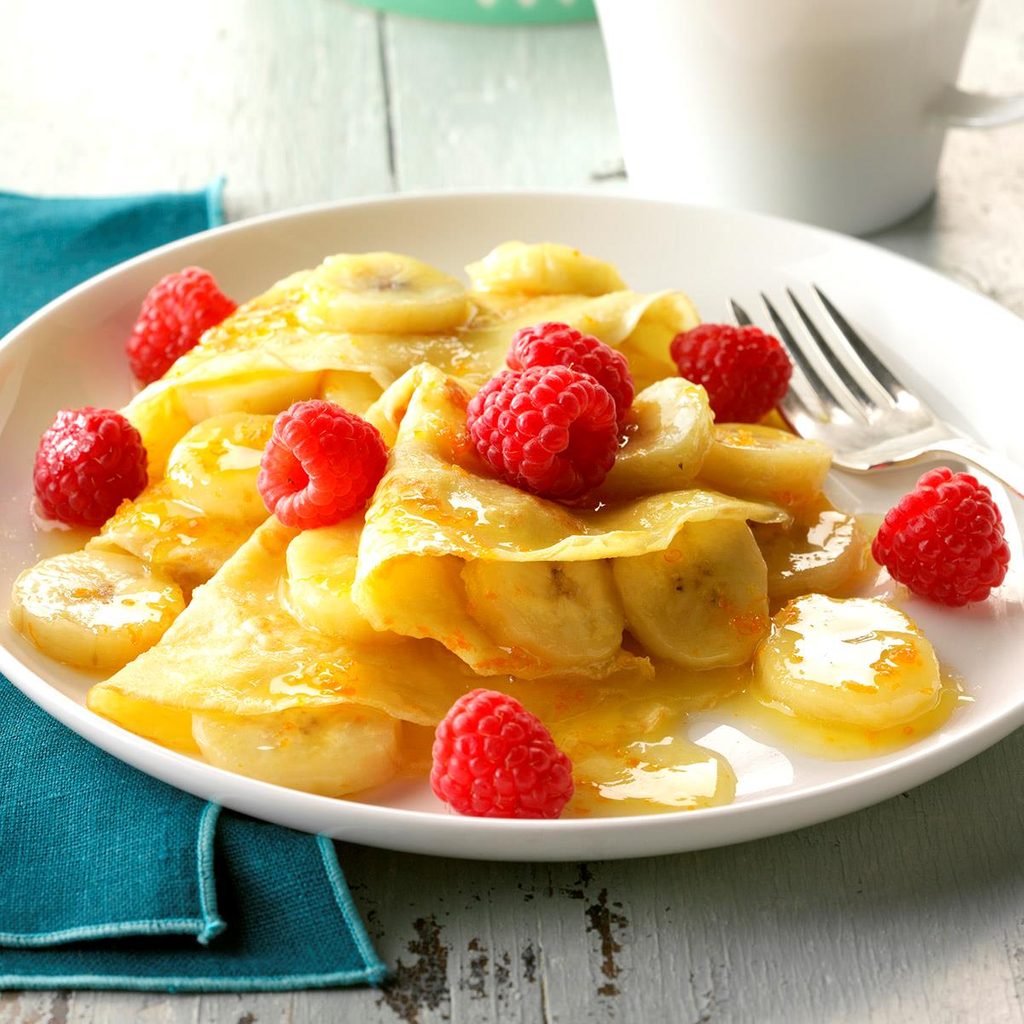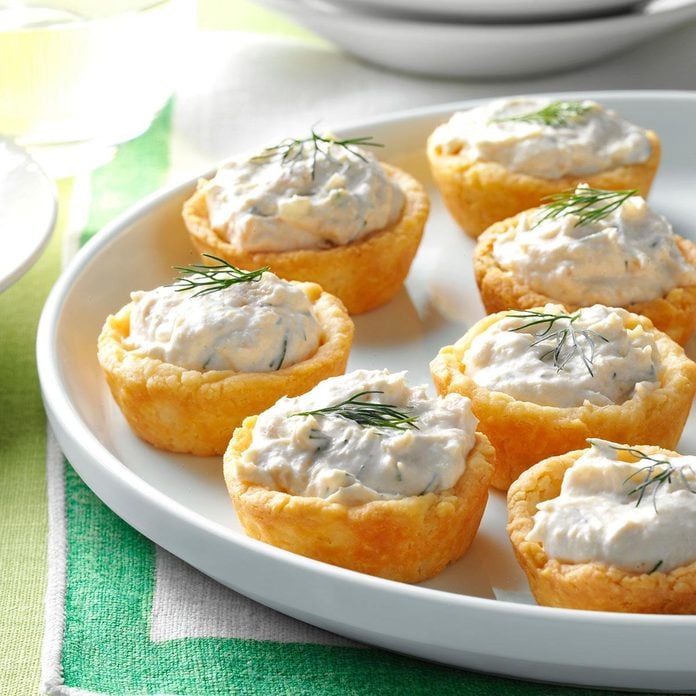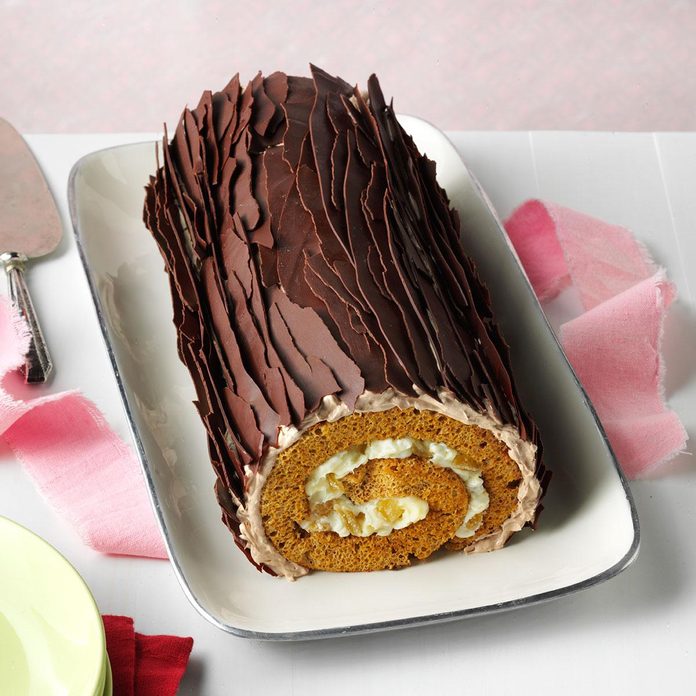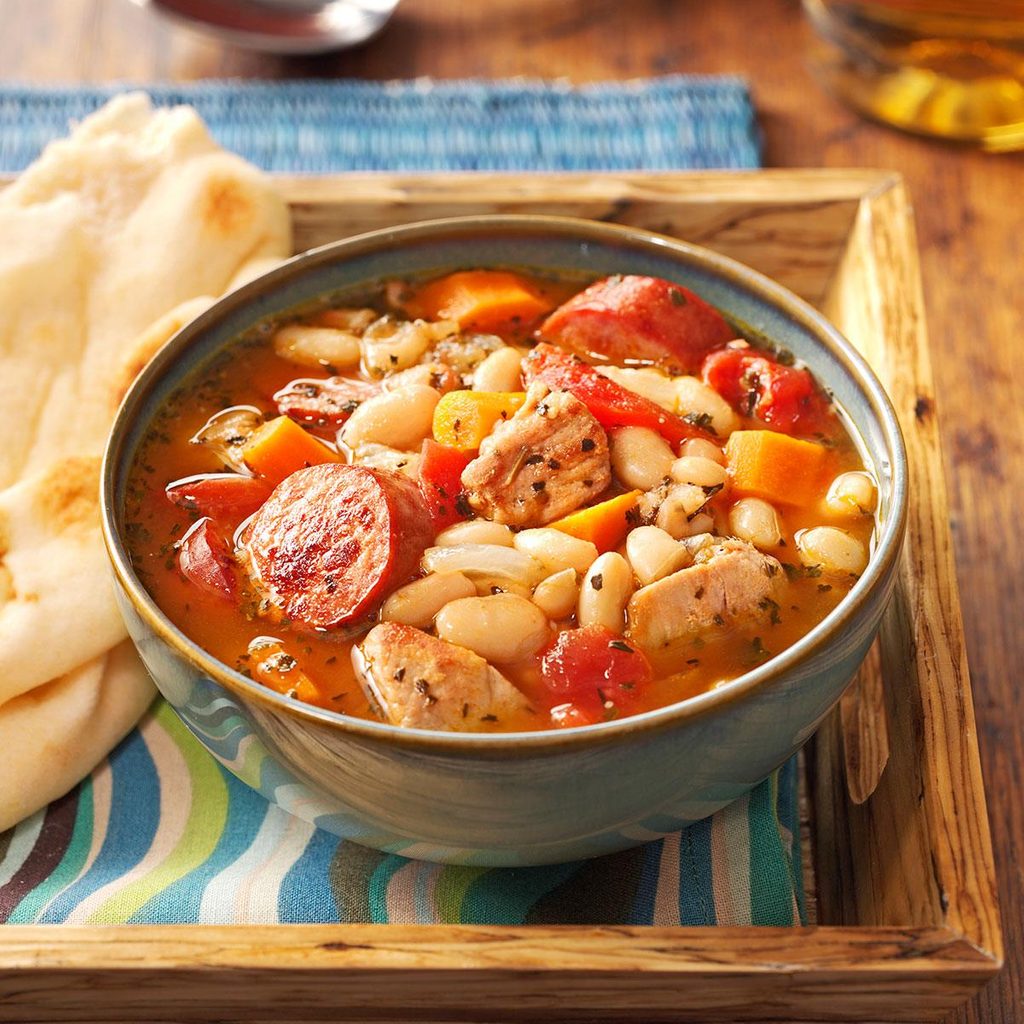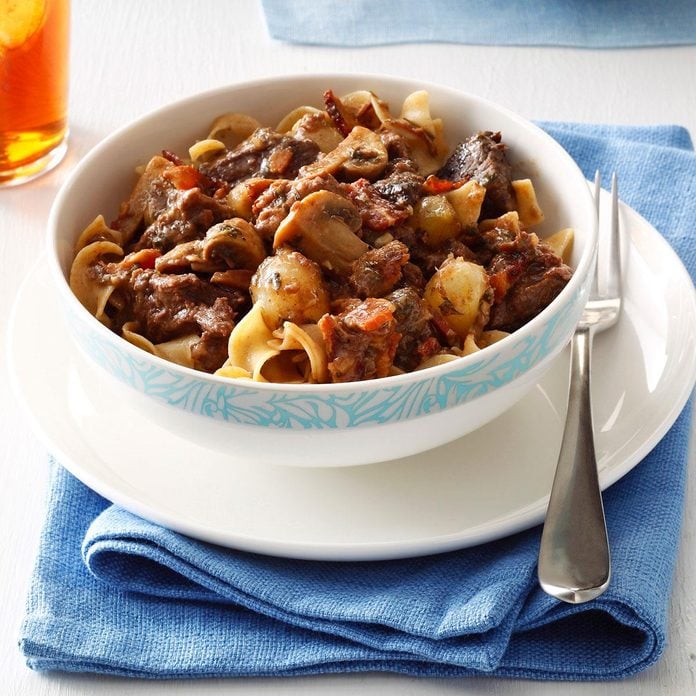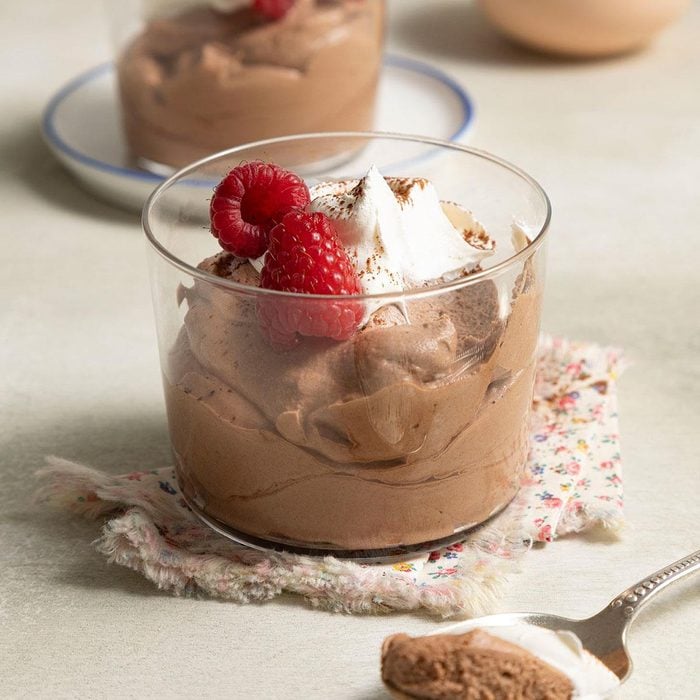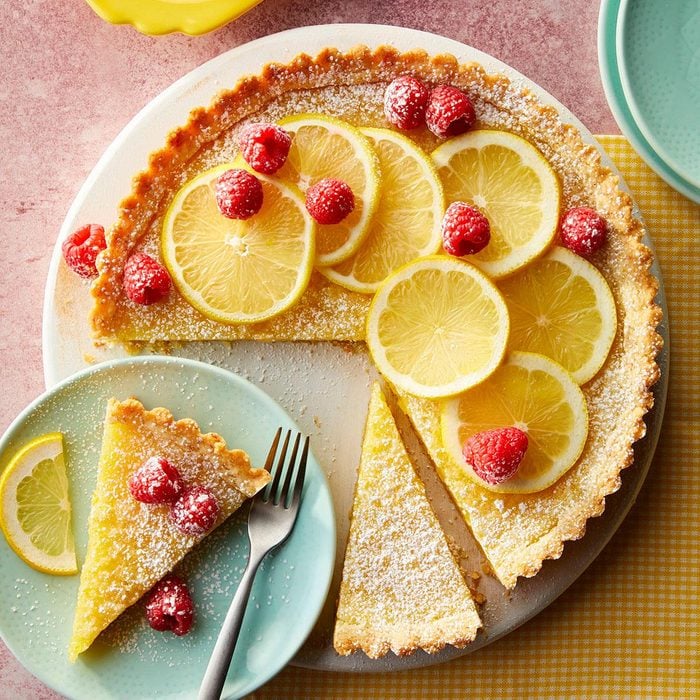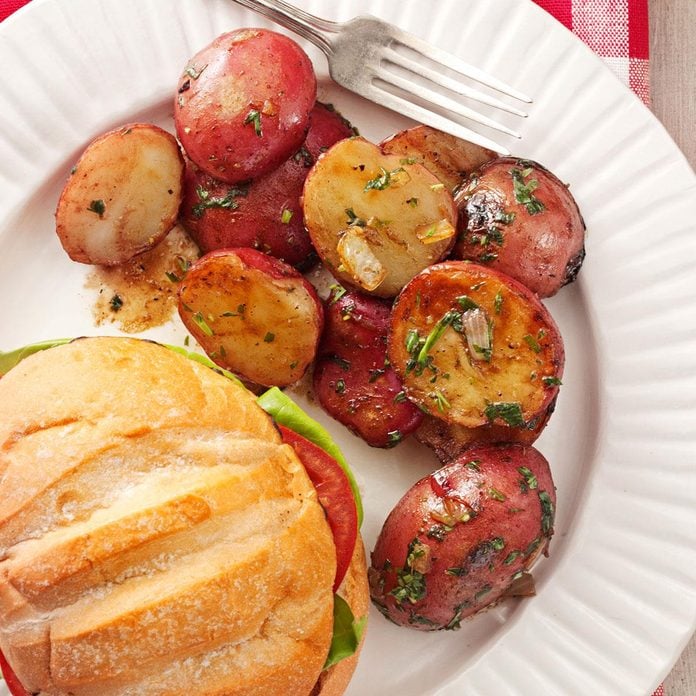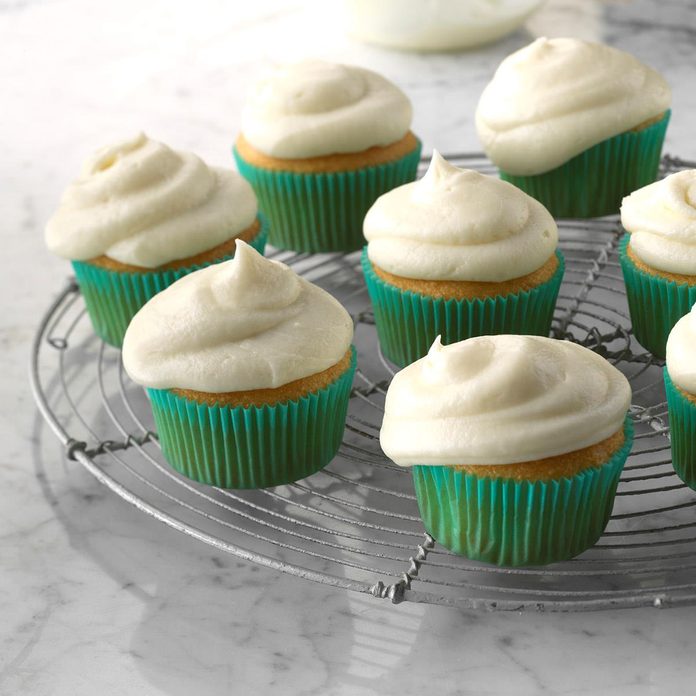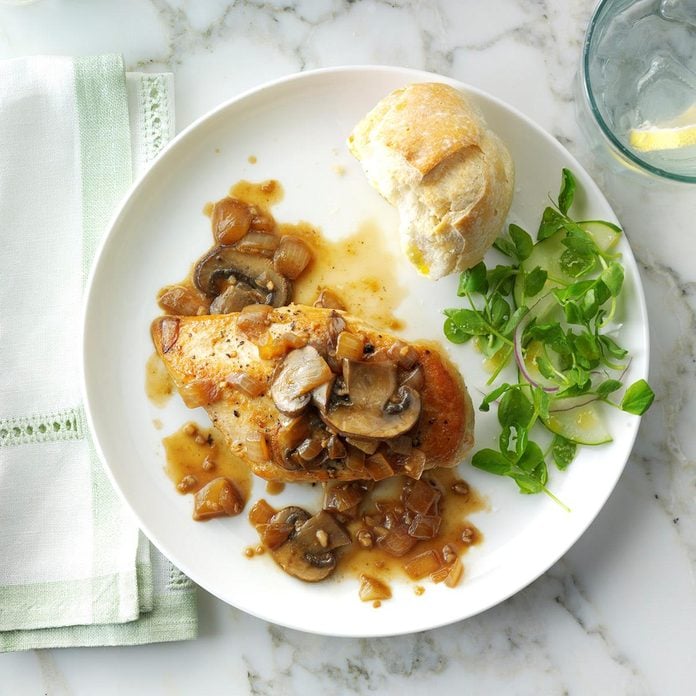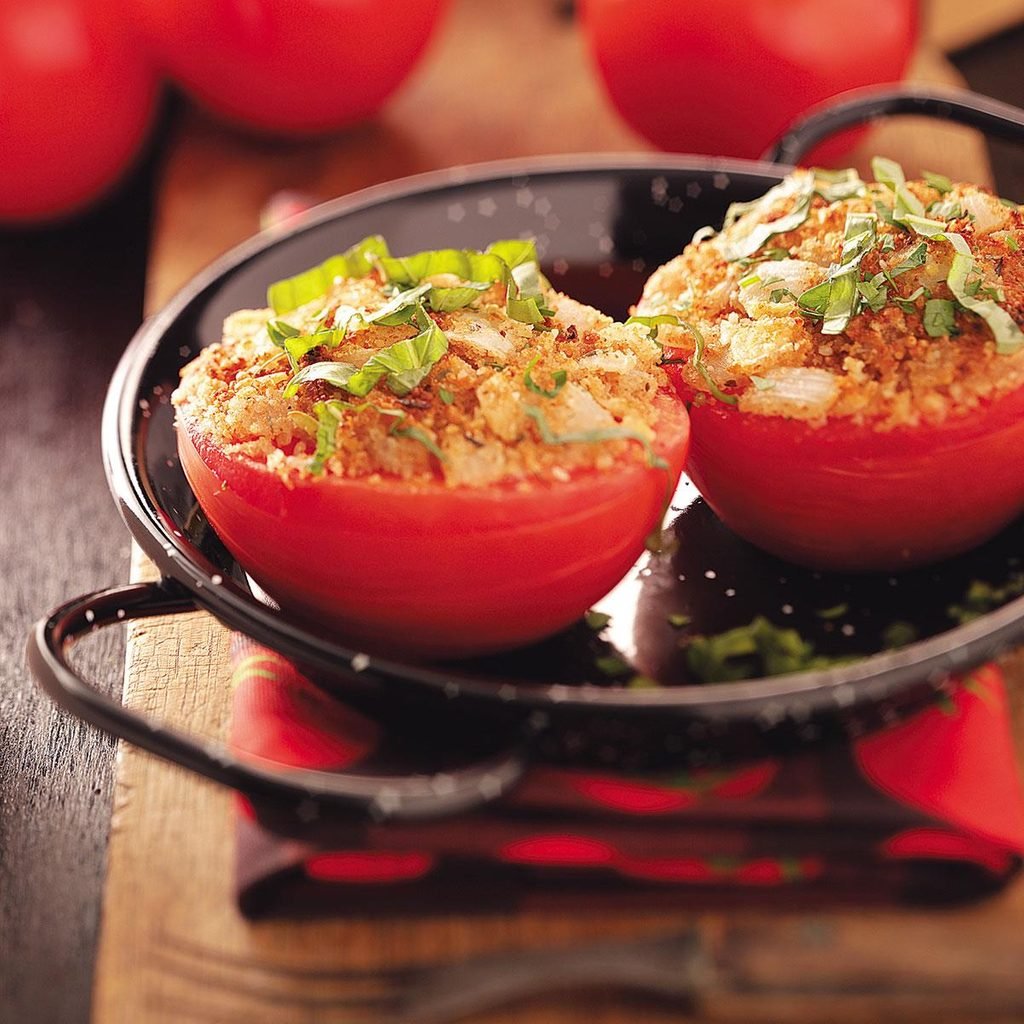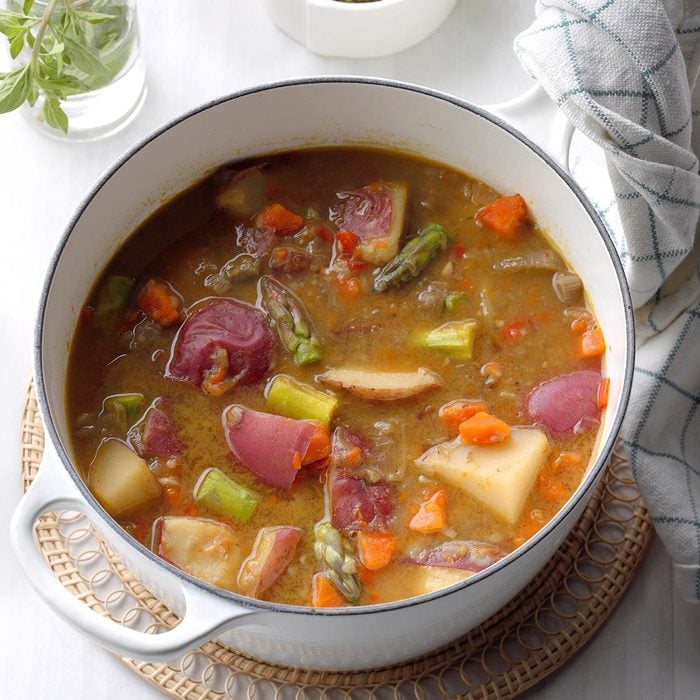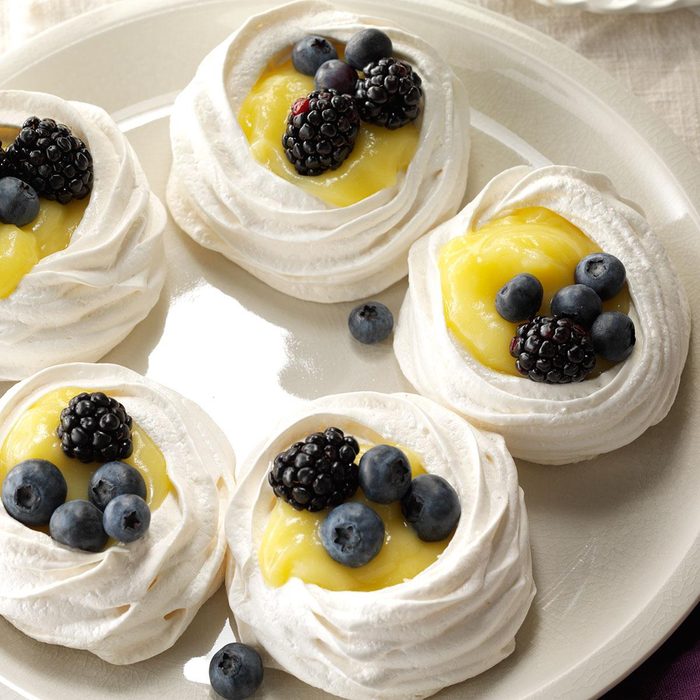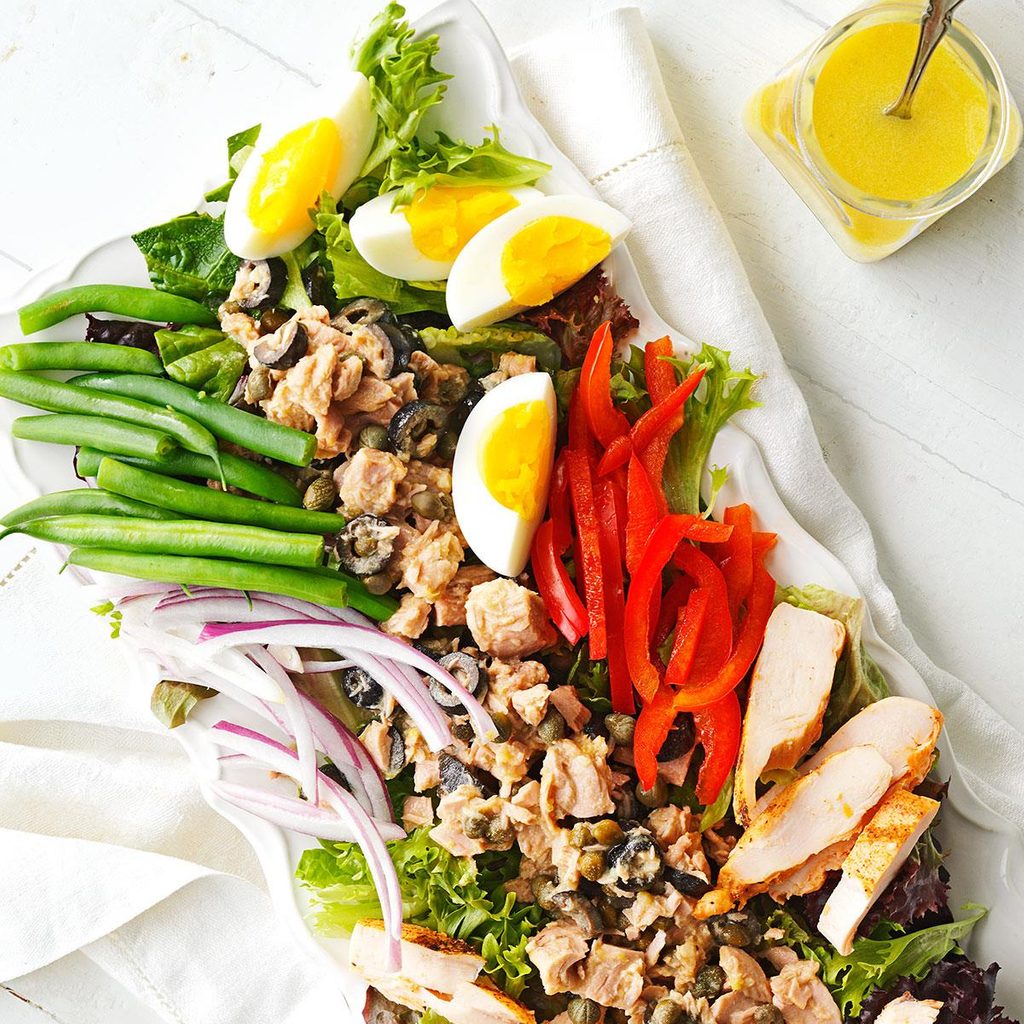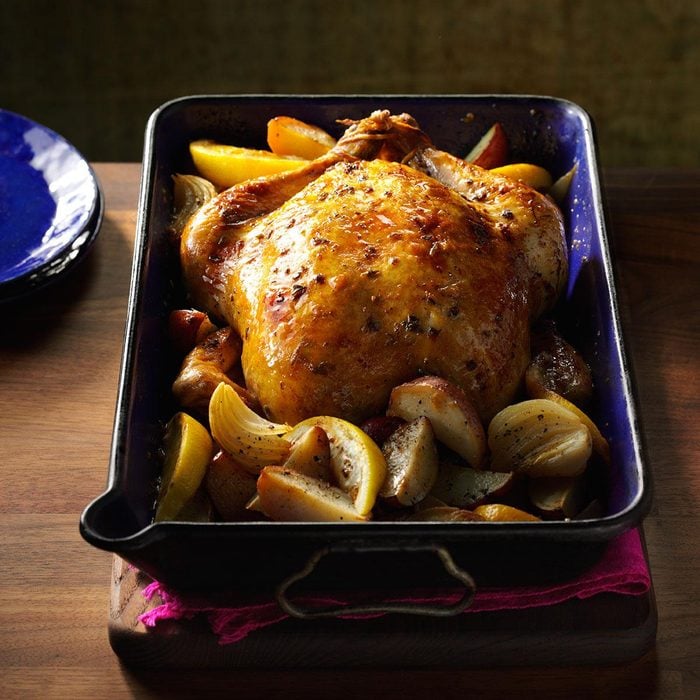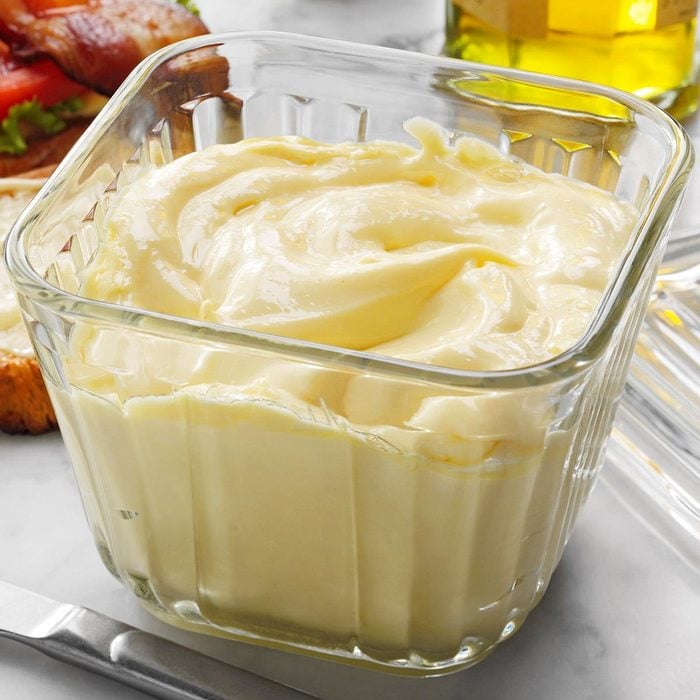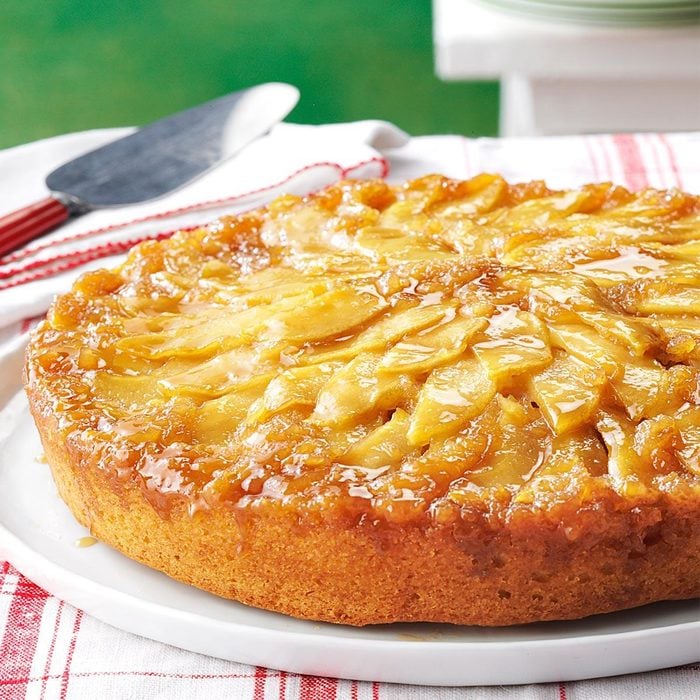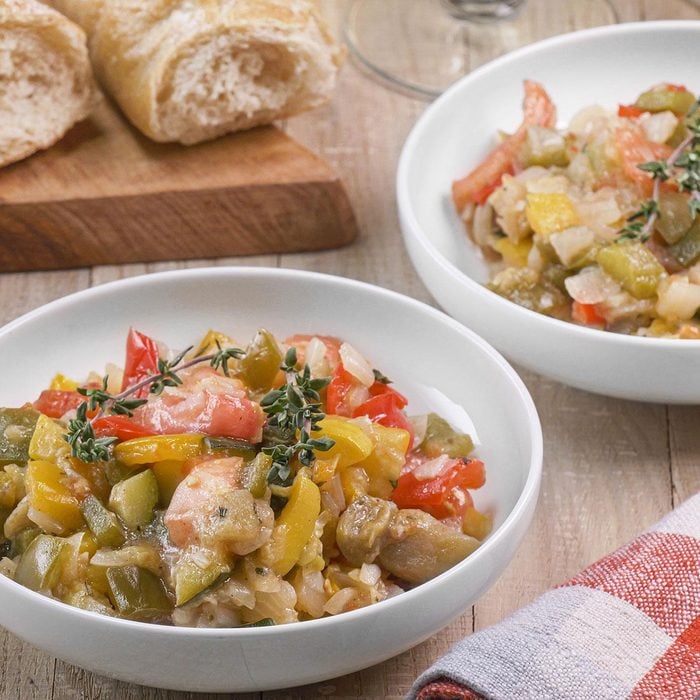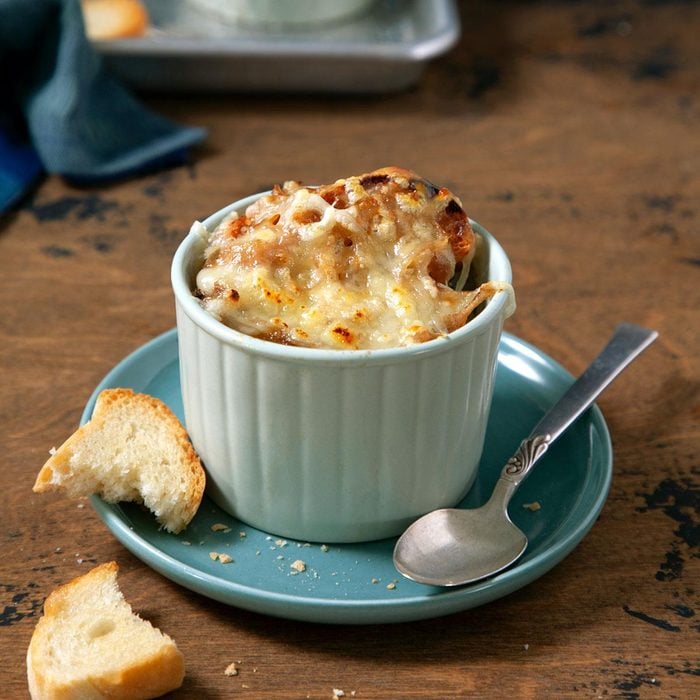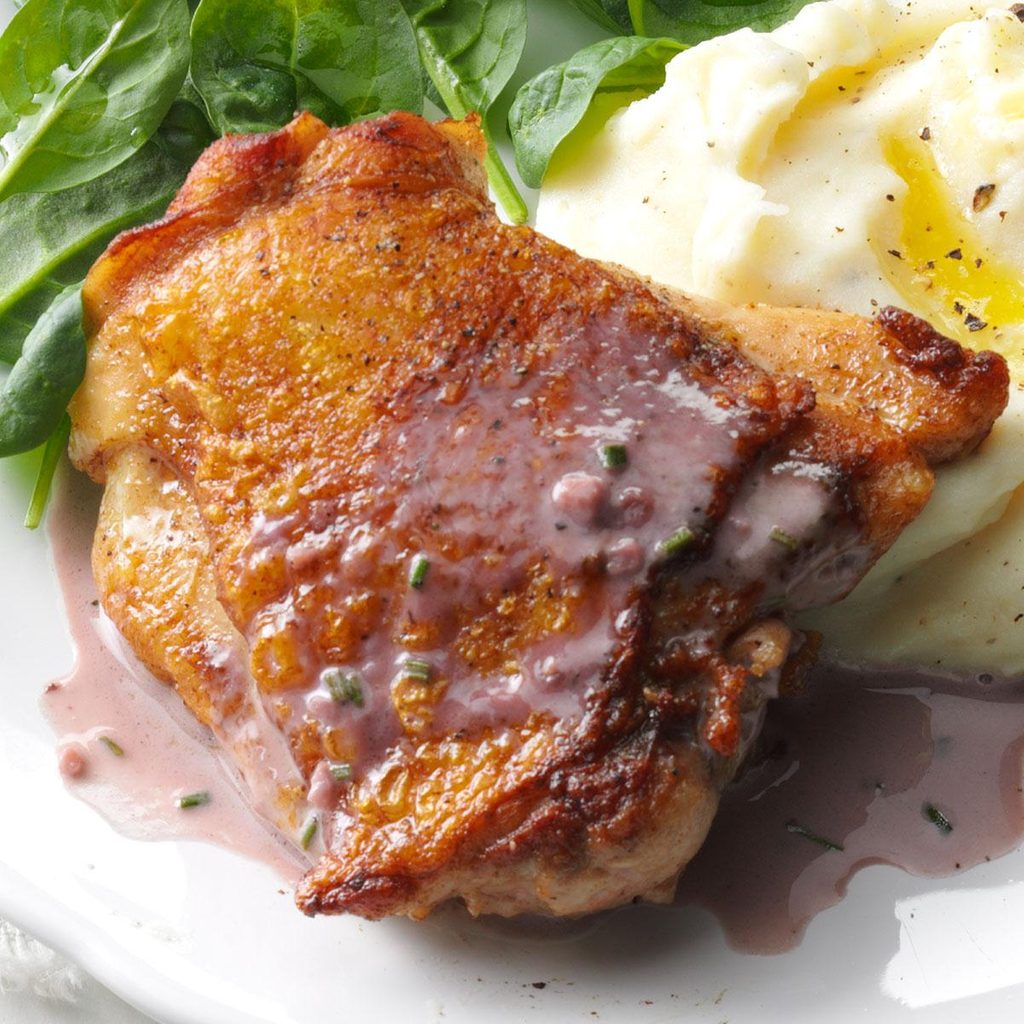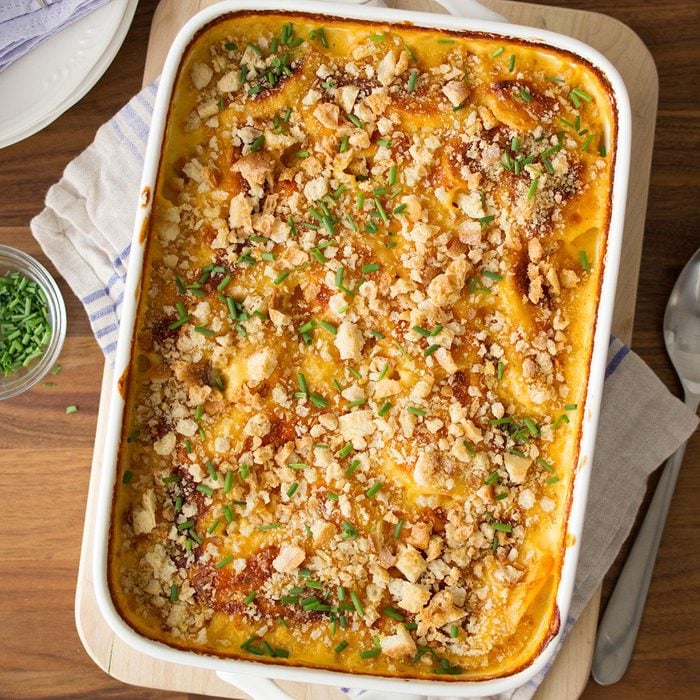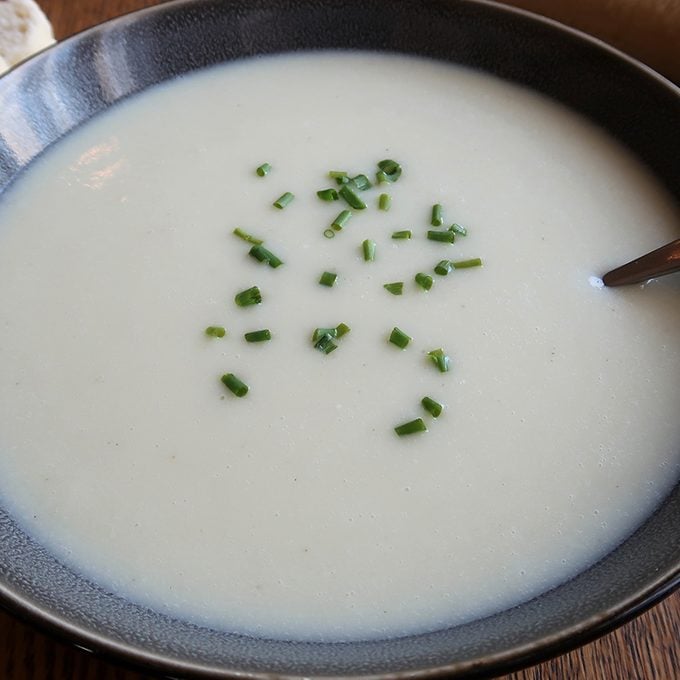I Made Julia Child’s Most Iconic Dishes and Here’s What Happened
Updated: Feb. 20, 2024
This is what happens when you embrace butter and take advice from The French Chef.
Baguettes, soufflés, ratatouille and croissants…there are few things in the world more delicious than French food. I know this because I was lucky enough to visit the northwest regions of France, where I became smitten with the country’s cuisine. There, I tried escargot for the first time (surprisingly delicious), sampled sweet and savory crepes from street vendors, and ate countless macarons (our Test Kitchen can show you how to make them at home). On returning to the U.S., I anticipated French food becoming a staple in my kitchen, but after taking one look at just how complicated the steps, ingredient preparations and even names seemed to be, I put my international cooking ambitions on hiatus.
Now that it’s been a few years since my last French dish, I figured it was time to try my hand at making one. And who better to guide me on a French cooking journey than the French Chef herself, Julia Child. With nearly 20 books and cookbooks and 13 cooking shows to her credit, Julia was the top authority for teaching Americans how to cook French food and taught us countless lessons that extend far beyond French cooking. Grabbing a copy of Mastering the Art of French Cooking ($50 for the set) and pulling out my computer to watch old episodes of The French Chef, I prepared myself to make six iconic French recipes in a week with Julia’s help and guidance. Here’s what happened:
Recipe #1: French Onion Soup
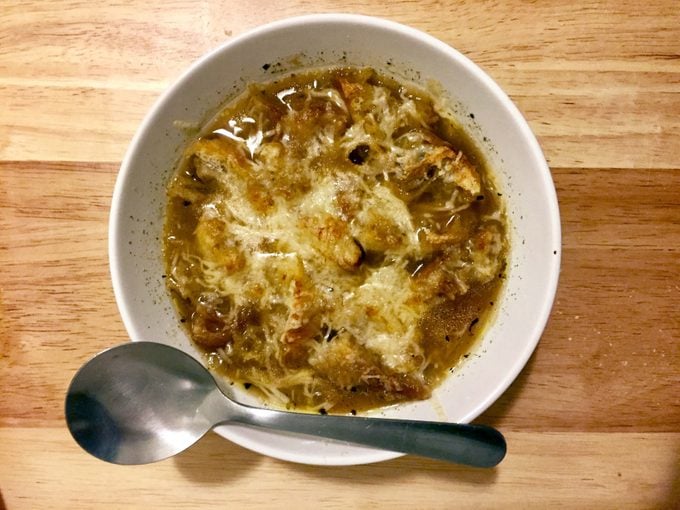
I decided to ease myself into French cooking with a basic, tough-to-mess-up French onion soup. Soupe à l’oignon, as it’s called in Mastering the Art of French Cooking, is my ultimate comfort food. It reminds me of being curled up on a couch, relaxing with my dog and trying (and failing) not to burn my mouth on the bubbling, cheesy top layer. Since winter had arrived in full force to Wisconsin, I was definitely in need of a comfy, cozy bowl of soup.
How It Went: This soup likes to take its time, requiring up to three hours to cook up. About half the time was dedicated to sweating and caramelizing the onion slices. According to Julia, onions can work well in just about any dish; indeed, “It is hard to imagine a civilization without onions,” she said. I knew the dish would have great flavor
While the recipe was straightforward, I made a fatal rookie mistake: cutting into my loaf of French bread before the soup was done. Since I lack all self-control when it comes to bread and butter, I spent my time waiting for the soup to cook by cutting a slice of bread to snack on, and then another, and then another and another, until close to half the loaf was gone. Oops.
Psst! Love bread like me? Try these incredibly easy homemade bread recipes.
My Takeaway: Letting your food cook nice and slow is worth it. While French onion soup is more of a weekend dish (eating dinner at 9:30 isn’t something I plan on making a habit of), this was one of the most delicious soups I’ve ever had. Rich and buttery, the soup requires extra time to break down the onions and develop flavor in the broth, but it is so worth it. The soup’s butter, oil, bread and cheese make it unsuitable for dieters; it’s so good you might want to eat the whole pot yourself—like I did.
Like this? Try our recipe for French Onion Soup.
Recipe #2: Quiche Lorraine
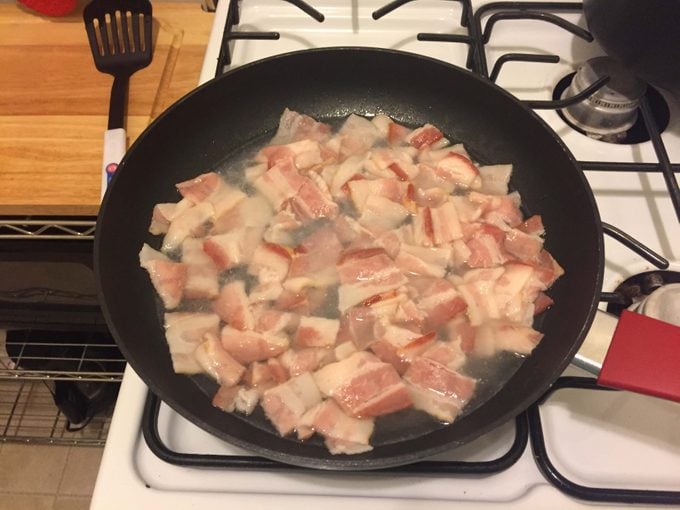
Frittata, the quiche’s crust-less, cream-less cousin, is one of my favorite ways to use up leftover produce. Quick to throw together and cook, I figured a quiche would be just as easy. I settled on Julia Child’s quiche Lorraine—since it is one of the most popular types of quiche.
How It Went: The recipe’s first step threw me off: Julia wanted me to boil bacon? I was more than a little skeptical. After all, the crispy, crunchy taste of bacon is my favorite. Her purpose, though, was to reduce the salty, smoky taste of the bacon in favor of a much subtler flavor. I did as Julia said and simmered, then fried, bacon pieces before adding them to a mix of beaten eggs, cream, butter and seasonings.
My Takeaway: Don’t be afraid of new techniques. Blanching bacon is something I would never normally do, but it was one of the most fun and strange techniques I used throughout these recipes. While this recipe was not one of my favorites, it gave me the most fun because it built my confidence with cooking techniques and recipes I don’t normally try.
Like this? Try our quiche Lorraine recipe, and here’s our step-by-step guide for how to make quiche Lorraine.
Recipe #3: Cheese Soufflé
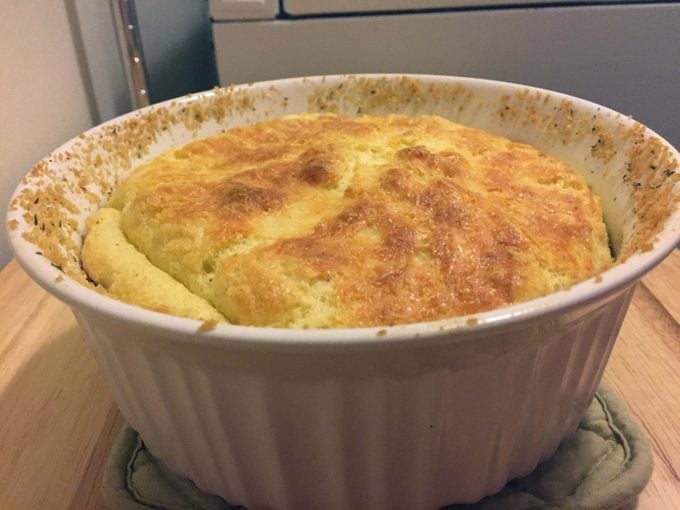
Ah, the Holy Grail of French cooking. The puffy, egg-based dish is notorious for being hard to make. One wrong step and the cloud of cheesy glory will deflate like a sad balloon. While I was intimidated, and a little scared of this dish, I knew I had to try it.
How It Went: Normally, I’m a relaxed, go-with-the-flow kind of cook, but this recipe had me on edge. Before even getting the eggs out of my refrigerator, I read and reread Julia’s instructions over and over, measured and double-checked the ingredients, and greased the dish.
Pro tip: For a cheesy, caramelized crust, dust your souffle dish with finely grated Parmesan.
Despite all my effort, my soufflé, tragically, rose no higher than the edge of the dish, and it continued to collapse the longer it was out of the oven.
My Takeaway: Just because a recipe doesn’t turn out perfect doesn’t mean it’s a failure. Though my soufflé rose only a couple of inches (largely because I failed to whip enough air into my egg whites), this is now one of my favorite egg dishes ever. The flavor was rich without being heavy, and the browned cheese along the sides and top of the soufflé gave it a deep orange color. Now that I’ve conquered my fears, I cannot wait to try this dish again with less stress.
Like this? Try our recipe for Three Cheese Souffles.
Recipe #4: Boeuf Bourguignon
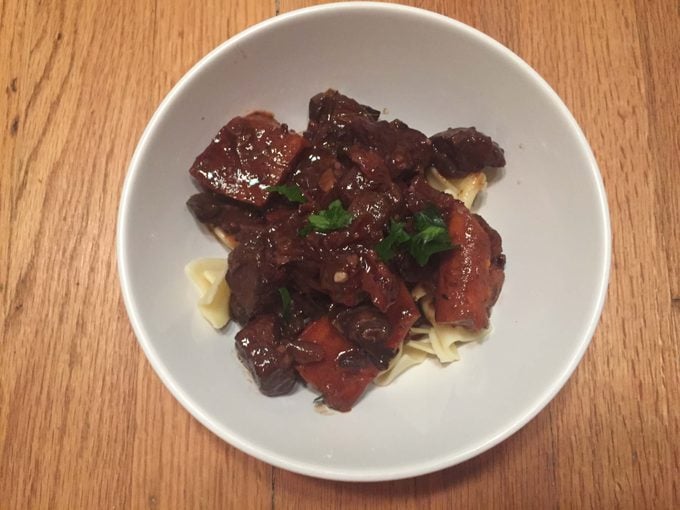
Difficult to spell. Hard to pronounce. Delicious to eat. Since this recipe was the first one featured on Julia’s PBS show The French Chef and is one of her most famous recipes, the beef stew was a must-make. Plus, after a few days of soup and egg dishes, I was ready for some meaty goodness.
How It Went: When I started making this, I worried I’d spend hours standing in front of the stove browning ingredients. However, frying the bacon, browning the beef and sautéing the onions and carrots were incredibly easy. (But since I only own one frying pan, it definitely took longer than expected.) Once those ingredients were nice and caramelized, all I had to do was dump them in a pan with some red wine, broth and seasoning and toss it all in the oven until the meat was fall-apart tender.
My Takeaway: Complex-tasting food can be simple to make. Ignoring the extra time and energy tacked on because of my lone frying pan, this recipe was so, so easy. With only a handful of ingredients and five or so steps, I made one of the fanciest sounding and tastiest dishes I’ve had in a long time. It’s perfect for a date night in, or a holiday with the family. This recipe is one that everyone should have in their arsenal.
Like this? Try our recipe for Special Occasion Beef Bourguignon.
Recipe #5: Cauliflower Au Gratin with Cheese
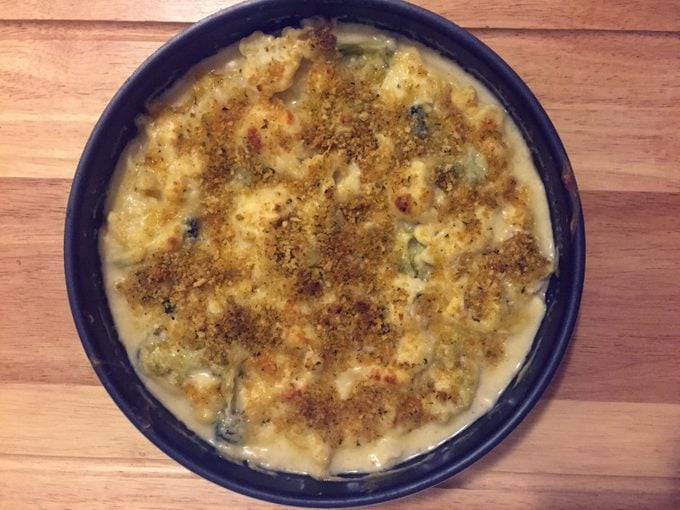 Though I savored the rich, tasty dishes Julia threw my way, I was in desperate need of a vegetable. But, because this is Julia Child, that vegetable would be covered in a cheesy béchamel sauce and baked with a crisp crumb topping. C’est la vie!
Though I savored the rich, tasty dishes Julia threw my way, I was in desperate need of a vegetable. But, because this is Julia Child, that vegetable would be covered in a cheesy béchamel sauce and baked with a crisp crumb topping. C’est la vie!
How It Went: This recipe reaffirmed my deep love of cheesy béchamel sauce. So easy to whip up, so creamy and cozy. Simply warm butter in a saucepan over medium heat. Once this is foaming, add flour and whisk, whisk, whisk! Then pour in milk to thicken the sauce. Season and add a healthy handful of Gruyere cheese. (I seriously want to cover everything I eat in this sauce.)
Since the only other steps in this recipe were quickly blanching the cauliflower, mixing it with the sauce, adding bread crumbs and cooking, this au gratin was one of the quickest Child recipes to get into the oven. Well played, Julia.
Main Takeaway: Julia once said, “With enough butter, anything is good.” And she certainly wasn’t wrong about that with this recipe. Clocking in at 2 tablespoons of butter, 2 cups of milk, half a cup of cheese plus breadcrumbs and even more butter, this recipe isn’t exactly a healthy veggie side dish, but it is so worth it. Since cutting even a tablespoon of butter from this recipe would really impact the creaminess of the sauce (and most likely cause the dish to burn or stick to the pan), I’d recommend saving this dish for a cheat day if you’re counting calories.
Like this? Try our recipe for Cauliflower au Gratin.
Recipe #6: Gâteau à l’Orange

While flipping through Mastering the Art of French Cooking, this little recipe for orange sponge cake caught my eye because it looked like half the recipe must be missing. I didn’t understand how less than a cup each of sugar and flour, an orange, 4 eggs and a dash of salt could become a cake. I was highly skeptical. I knew I had to try out this magical recipe.
How It Went: After mixing up the yolks, sugar, flour and orange batter, it took me a couple of minutes to whip up the egg whites and fold them into the batter. And that was it. No other ingredients or instructions. Julia said to just pop it in the oven for a half hour and somehow a cake would happen. And it did! Though it was a bit denser than I expected, this delightful little recipe baked into a stinkin’ good cake.
Main Takeaway: Baking doesn’t have to be a daylong project. This recipe took less than 10 minutes to put together (!!) and resulted in a sticky-citrusy cake that didn’t even need frosting. I’m still not entirely convinced this recipe isn’t magic.
Like this? Try our recipe for Orange Tea Cake.
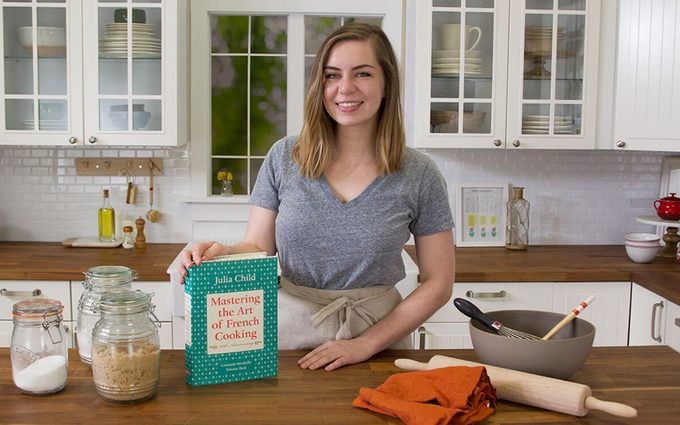
Overall, Julia’s recipes taught me that when it comes to cooking, just go for it! Whether a recipe intimidates you, you mess up a step, or half the dish ends up on your stovetop, cooking a new recipe is a chance to have some fun and try something completely different from what you’re used to. After all, Julia’s book is titled Mastering the Art of French Cooking, meaning that it’s there to help you tackle and manage French cuisine, not that you have to be a master to crack this cookbook open. Bon appétit!

